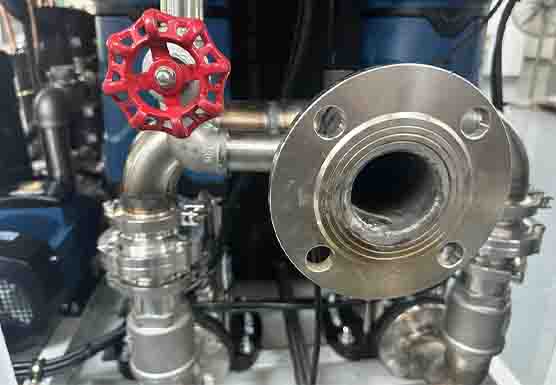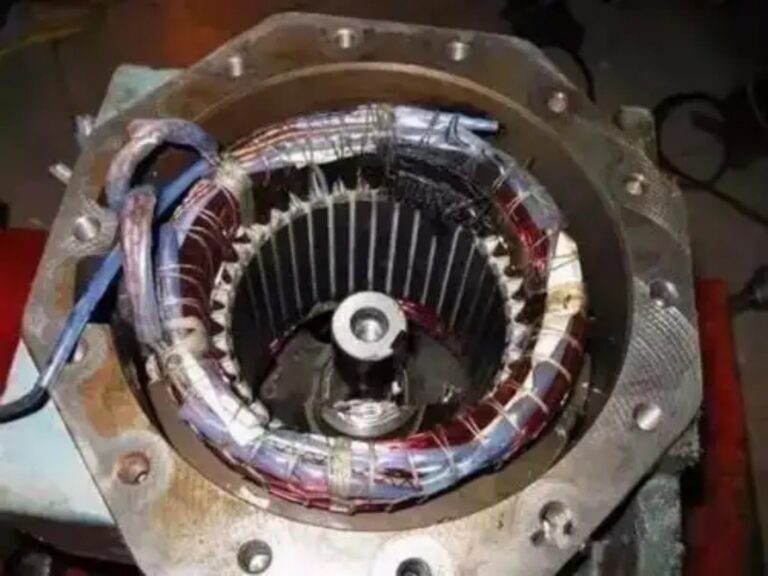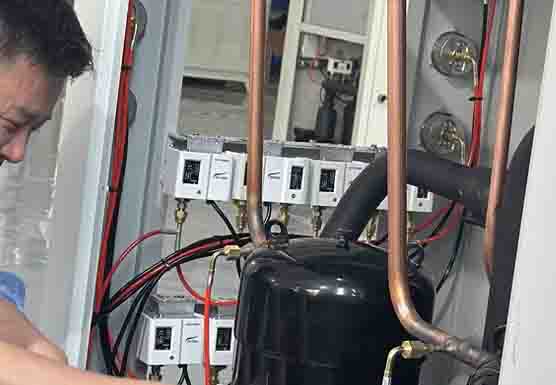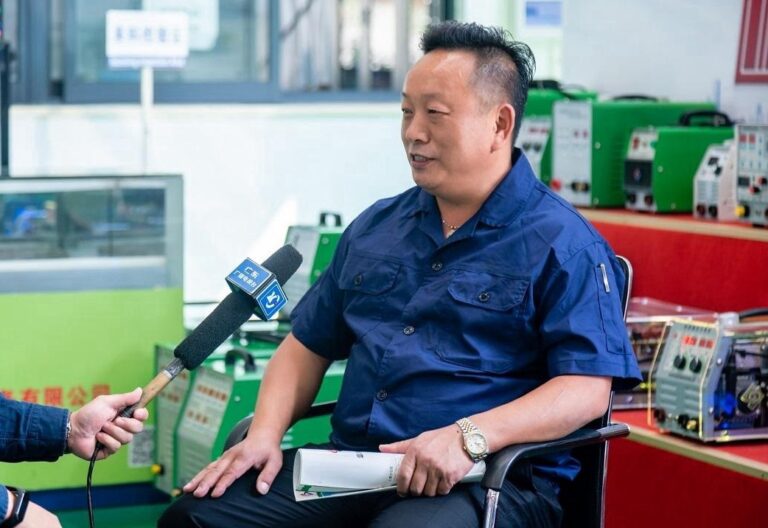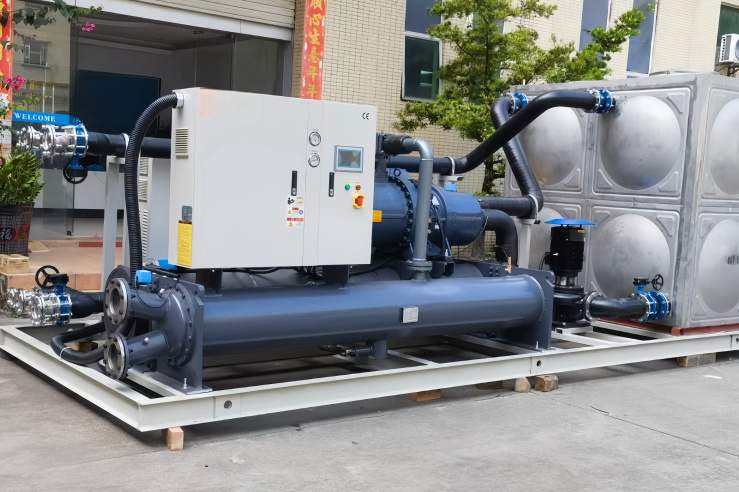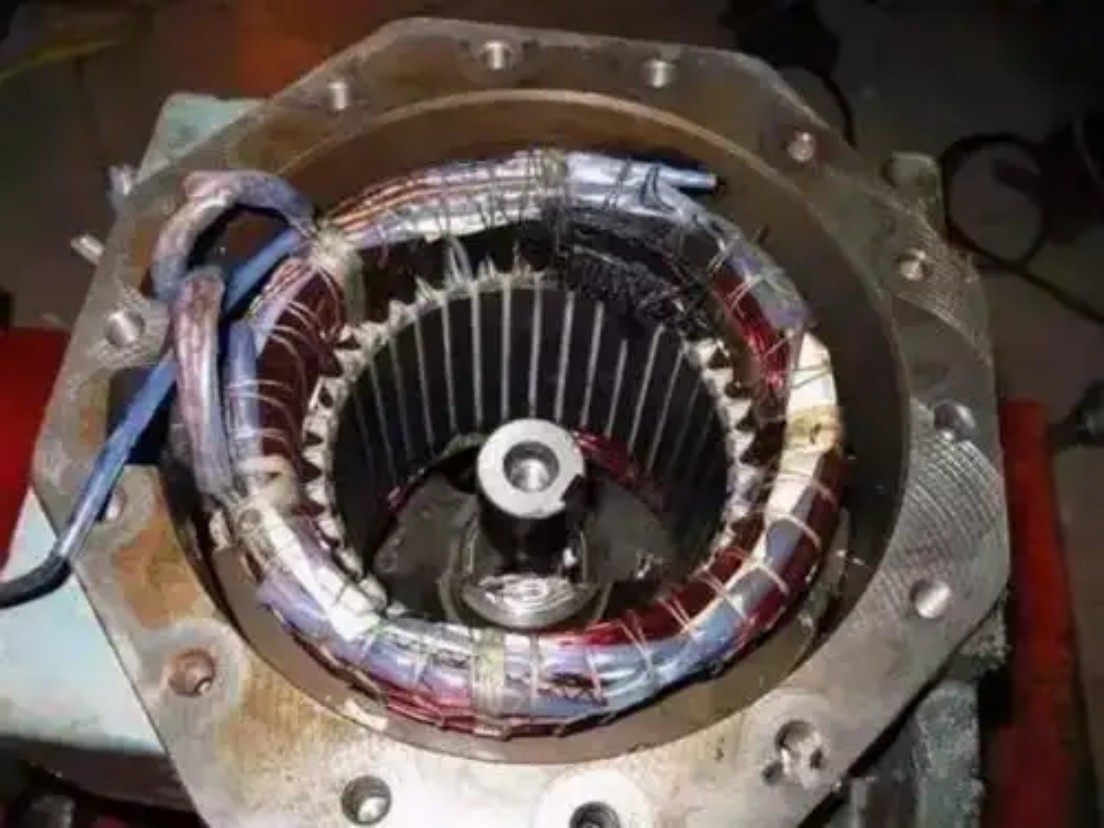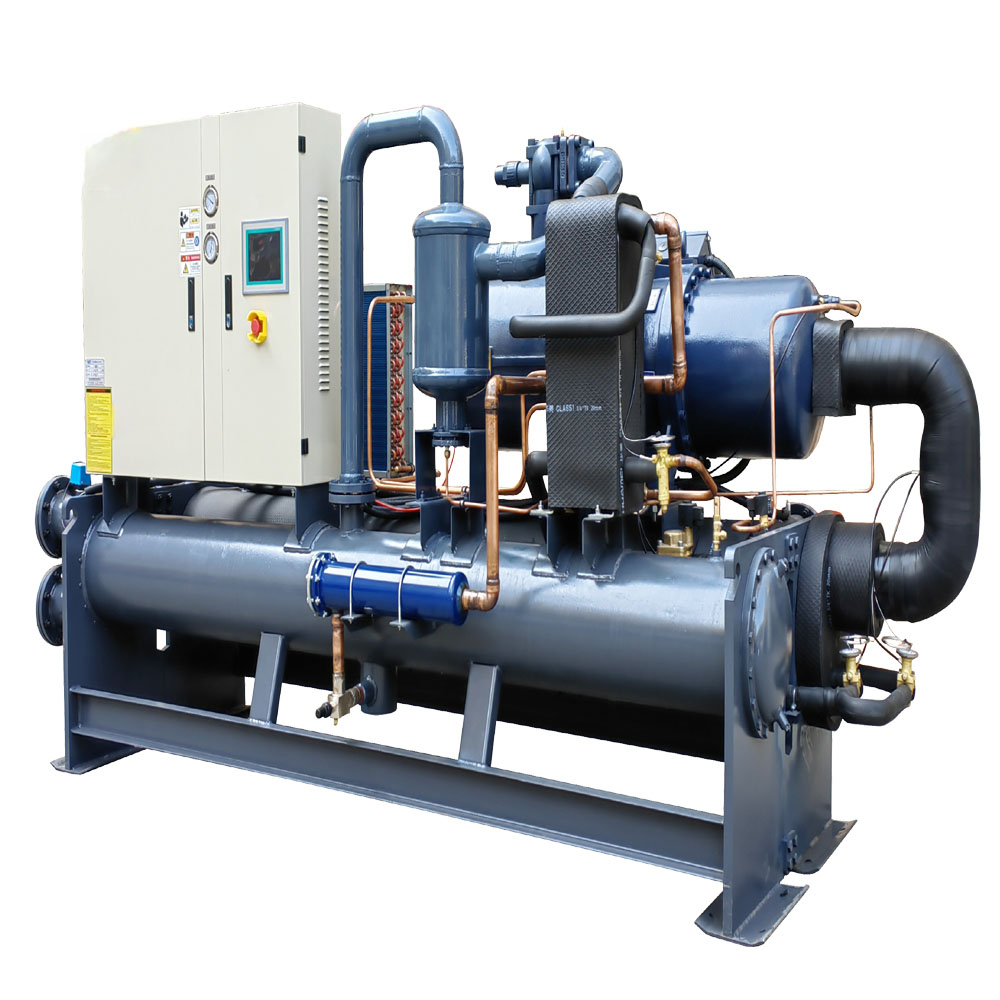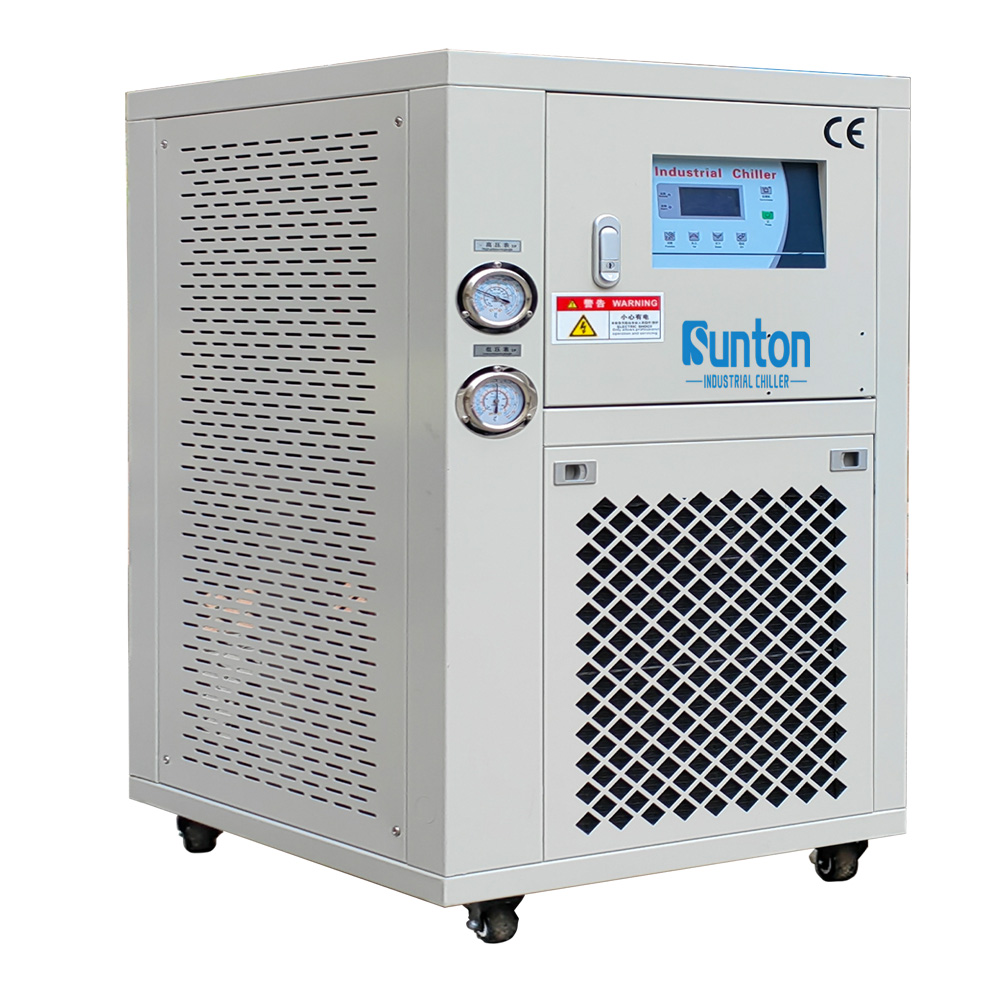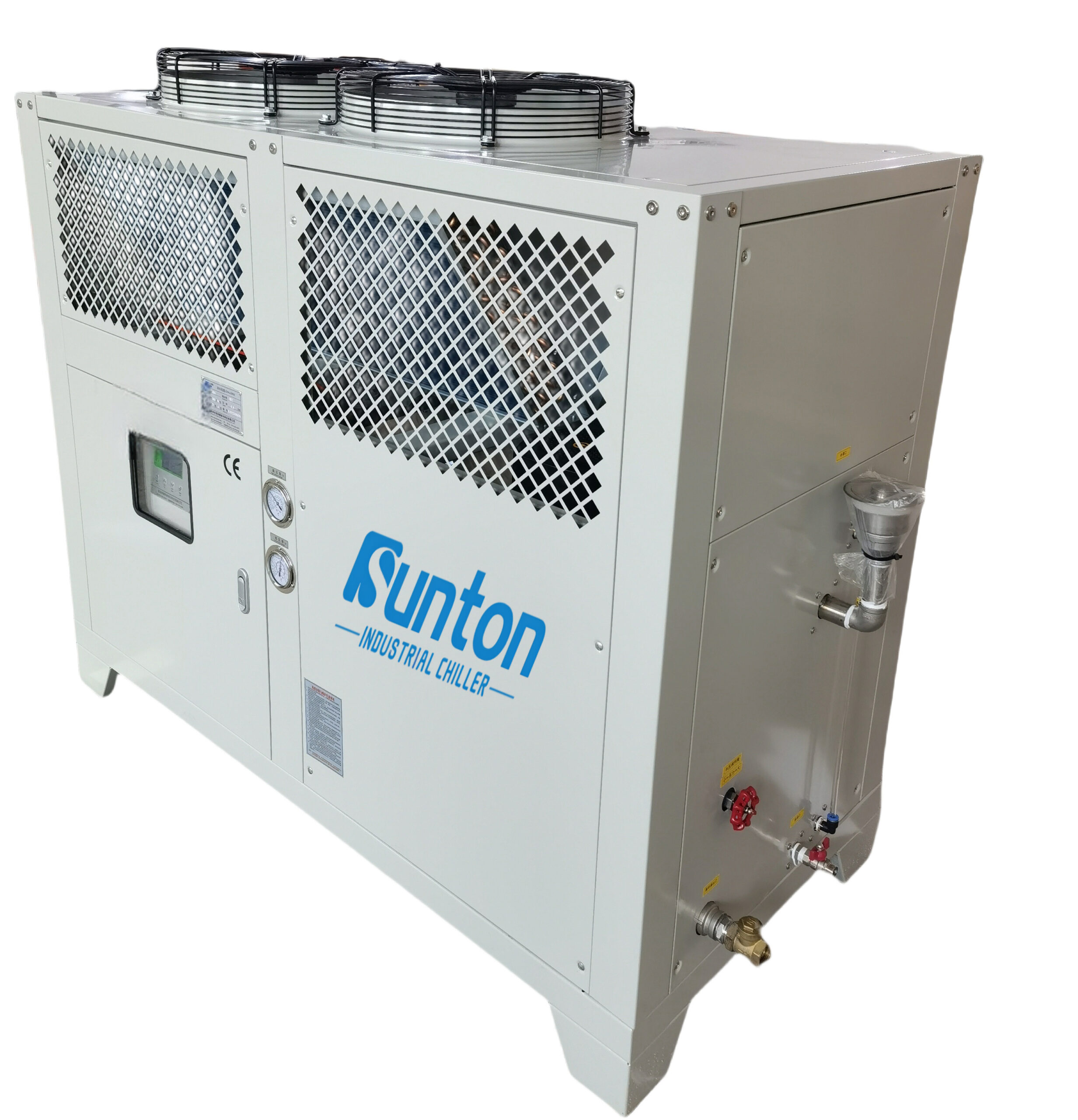-
Даліншань Індастріал Гуандун
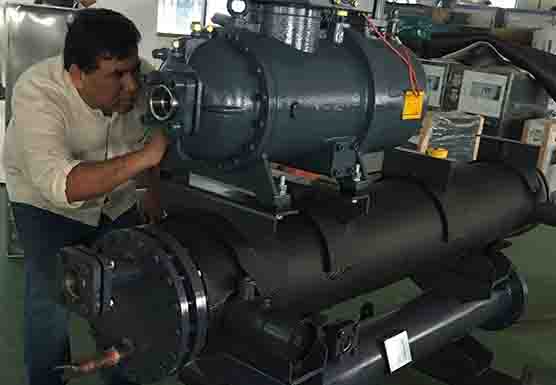
теплообмінник чи чиллер – що більше підходить для ваших потреб
Теплообмінник чи чиллер: що підходить для ваших потреб?
У цій статті розглядаються критичні відмінності між теплообмінники і чиллери, два важливі компоненти в різних промислових і комерційних застосуваннях. Розуміння окремих функцій і можливостей кожної системи є життєво важливим для оптимізації вашої система охолодження та забезпечення ефективної діяльності. Незалежно від того, чи працюєте ви в промисловості пластмас і гуми, машинобудуванні, виробництві харчових продуктів і напоїв, хімії та фармацевтиці, електроніці, лазерній промисловості, поліграфії, медицині, лабораторіях і дослідницьких установах або центрах обробки даних, цей посібник надасть цінну інформацію щодо вибору правильного рішення для ваших конкретних потреб. До кінця цього читання ви матимете чітке розуміння того, як працює кожна система, її застосування та чому прийняття обґрунтованого рішення має вирішальне значення для вашого промисловий процес.
Зміст
Що таке теплообмінник і як він працює?
А теплообмінник це пристрій, призначений для передавати тепло між двома або більше рідинами, як правило, рідинами або газами, без їх змішування. Теплообмінники звикли до тепла або круто рідина шляхом перенесення тепла від одного рідини іншому. Одним із поширених типів є пластинчастий теплообмінник, який використовує низку тонких паралельних пластин для створення великої площі поверхні теплообмін. Інший тип - це кожухотрубний теплообмінник, який складається з пучка трубок, укладених в оболонку.
Основна функція a теплообмінник полягає в тому, щоб сприяти ефективній теплообмін між рідинами. Наприклад, на електростанції a теплообмінник можна звикнути передавати тепло від гарячої пари, що утворюється котлом, до система водопостачання, попередньо нагріваючи воду перед її надходженням у котел. Це підвищує ефективність процесу виробництва електроенергії. Ефективність a теплообмінник залежить від таких факторів, як доступна площа поверхні теплообмін, витрати рідин і різницю температур між ними. Треба підкреслити, що як один із високоякісних промислових виробники чиллерів в промисловості. Мій досвід підказує це теплообмінники зазвичай використовуються в різних сферах застосування, включаючи системи опалення, вентиляції та кондиціонування повітря, охолодження та виробництво електроенергії.
Що таке чиллер і чим він відрізняється від теплообмінника?
А чиллер це пристрій, який знімає тепло з рідини через стиснення пари або абсорбцію охолодження цикл. Потім цю охолоджену рідину можна використовувати для круто обладнання або інший потік процесу. На відміну від a теплообмінник, а чиллер може досягати значно нижчих температур і здатний активно охолоджувати рідину нижче температура навколишнього середовища. The основна відмінність між а теплообмінник і а чиллер це а теплообмінник просто передають тепло через різні рідини тоді як a чиллер активно зніміть тепло використовуючи a холодильний агрегат.
Чиллери використовувати a холодоагент який зазнає зміни фази для поглинання і зніміть тепло від охолодженої води. The холодоагент потім проходить через a компресор, що підвищує його тиск і температуру. Це гаряче холодоагент потім охолоджується в конденсатор, часто з використанням води або повітря, перед розширенням і поверненням у випарник для повторного запуску циклу. Чиллери з водяним охолодженням використовувати воду для круто в конденсатор, поки чиллери з повітряним охолодженням використовувати навколишнє повітря. Вибір між чиллери з водяним охолодженням і чиллери з повітряним охолодженням залежить від таких факторів, як наявність води, вимог до енергоефективності та конкретного застосування. Наприклад, у процесі лиття пластмас під тиском, a чиллер звикає швидко круто формованих деталей, скорочуючи час циклу та покращуючи якість продукції. Ви можете перевірити наш Гвинтовий охолоджувач води з водяним охолодженням.
Які бувають різні типи теплообмінників?
Є декілька види теплообмінників, кожна з яких розроблена для певних застосувань і умов експлуатації. Серед поширених типів:
- Пластинчасті теплообмінники: Вони складаються з низки тонких гофрованих пластин, складених разом. Рідини течуть між пластинами, а велика площа поверхні сприяє ефективності теплообмін. Пластинчасті теплообмінники широко використовуються в харчовій промисловості, системах опалення, вентиляції та кондиціонування повітря та хімічній обробці завдяки своїй компактній конструкції та високій термічній ефективності.
- Кожухотрубні теплообмінники: Вони складаються з пучка трубок, укладених у циліндричну оболонку. Одна рідина протікає по трубках, а інша обтікає трубки всередині оболонки. Кожухотрубні теплообмінники є універсальними та можуть витримувати високий тиск і температури, що робить їх придатними для виробництва електроенергії, нафтохімічних процесів і морських застосувань.
- Теплообмінники з повітряним охолодженням: Для цього використовується навколишнє повітря круто рідина, як правило, рідина або газ. Вони зазвичай використовуються там, де вода недоступна або де збереження води викликає занепокоєння. Приклади включають системи HVAC, промислові процеси та виробництво електроенергії.
Кожен вид теплообмінник має свої переваги та обмеження. Наприклад, пластинчасті теплообмінники забезпечують високу ефективність і компактність, але не підходять для застосування під високим тиском. Кожухотрубні теплообмінники можуть витримувати вищий тиск і є міцнішими, але зазвичай більші та менш ефективні.
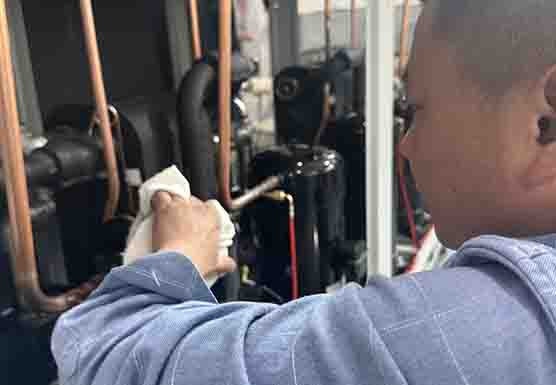
Які основні сфери застосування чиллерів у різних галузях промисловості?
Чиллери відіграють вирішальну роль у багатьох галузях промисловості, забезпечуючи охолодження для різних процесів і обладнання. Ось кілька основних програм:
- Промисловість пластмас і гуми: Чиллери необхідні для охолодження прес-форм і обладнання в процесах лиття під тиском, видувного формування та екструзії. Швидке охолодження пластикових деталей допомагає скоротити час циклу, покращити якість продукції та збільшити продуктивність.
- Харчова промисловість та виробництво напоїв: Чиллери звикли круто продукції на різних етапах обробки та зберігання. Наприклад, на пивоварнях, чиллери використовуються для підтримки точної температури бродіння та для круто пиво після варіння.
- Хіміко-фармацевтична промисловість: Чиллери життєво важливі для підтримки оптимальної температури в реакторах, конденсаторах і резервуарах для зберігання. Точний контроль температури має вирішальне значення для забезпечення якості продукції та безпеки процесу.
З мого досвіду як один з високоякісних промислових виробники чиллерів, я бачив як чиллери є невід’ємною частиною підтримки ефективності та надійності промислових процесів. Наприклад, у медичній галузі, чиллери звикли круто Апарати МРТ та інше діагностичне обладнання, що забезпечує їх точну та надійну роботу. Ось приклад Промислові холодильні установки для гальванічного покриття.
| Промисловість | Заявка | Тип чиллера |
| Пластмаси та гума | Охолодження форми, охолодження екструзії | З водяним охолодженням |
| Їжа та напої | Ферментація, охолодження продукту | Гліколеві охолоджувачі |
| Хіміко-фармацевтичний | Охолодження реактора, охолодження конденсатора | З водяним охолодженням |
| електроніка | Виробництво напівпровідників, охолодження друкованих плат | З повітряним охолодженням |
| Лазерна | Лазерне різання, лазерне зварювання | З водяним охолодженням |
| Друк | Охолодження чорнила, роликове охолодження | Повітряне охолодження/гліколь |
| Медичний | Охолодження МРТ, охолодження лабораторного обладнання | З водяним охолодженням |
| лабораторії | Охолодження зразків, охолодження обладнання | З повітряним охолодженням/портативний |
| Центри обробки даних | Охолодження сервера, Кондиціонер | З водяним охолодженням |
| Механічна обробка | Охолодження ріжучої рідини, охолодження верстатів | З повітряним охолодженням/портативний |
Як теплообмінники та чиллери працюють разом у системі охолодження?
У багатьох промислових застосуваннях, теплообмінники та чиллери працювати разом, щоб забезпечити ефективне охолодження. The чиллер охолоджує рідину, зазвичай воду або водно-гліколь суміші, щоб зняти вогонь. Це охолоджені потім рідина циркулює через a теплообмінник, де він поглинає тепло від даного процесу або обладнання. Це інтегровано чиллерні системи охолодження гарантує, що процес залишається в бажаному діапазоні температур.
Наприклад, у центрі обробки даних чиллери звикли круто вода, яка потім циркулює теплообмінники в серверних стійках. The теплообмінники поглинати утворене тепло серверами, передаючи його на охолодженої води. Потім нагріту воду повертають у чиллер знову охолодити. Цей безперервний цикл підтримує оптимальну робочу температуру для серверів, запобігаючи перегріву та забезпечуючи надійну роботу. Або подивіться, як працює Охолоджувачі молока для молочної промисловості.
Які фактори слід враховувати, обираючи між теплообмінником і чиллером?
Вибір між a теплообмінник і а чиллер залежить від кількох факторів, у тому числі конкретних вимог до охолодження, умов експлуатації та міркувань енергоефективності. Ось кілька ключових факторів, які слід враховувати:
- Вимоги до температури: Якщо процес вимагає охолодження нижче температура навколишнього середовища, а чиллер є необхідним. Теплообмінники може лише охолоджувати рідину близько до температура навколишнього середовища, поки чиллери можна досягти значно нижчих температур за допомогою охолодження.
- Теплове навантаження: Сума тепло який потрібно видалити, відомий як тепло навантаження, є критичним фактором. Чиллери призначені для обробки вищих тепло навантаження в порівнянні з теплообмінники. Наприклад, висока тепло- генеруючі процеси, такі як лиття пластику під тиском або лазерне різання, зазвичай вимагають a чиллер.
- Енергоефективність: Споживання енергії є важливим фактором. Теплообмінники загалом є більш енергоефективними, ніж чиллери оскільки вони не вимагають a компресор або інші енергоємні компоненти. однак, чиллери необхідні для застосувань, де потрібні нижчі температури.
У своєму професійному досвіді я виявив, що розуміння конкретного потреби в холодильних машинах процесу має вирішальне значення для прийняття правильного рішення. Наприклад, лабораторія може використовувати a теплообмінник для простих завдань охолодження, але вимагають a чиллер для термочутливих експериментів.
Чилери з повітряним і водяним охолодженнями порівняні?
Чиллери можна умовно класифікувати на два типи: з повітряним охолодженням і з водяним охолодженням. Кожен вид має свої переваги і недоліки, що їх обумовлює підходить для ваших потреб і різні програми.
Чиллери з повітряним охолодженням використовуйте навколишнє повітря для охолодження холодоагент в конденсатор. Зазвичай їх простіше встановити та обслуговувати, ніж чиллери з водяним охолодженням оскільки вони не вимагають окремого джерела води чи градирні. Чиллери з повітряним охолодженням зазвичай використовуються в невеликих приміщеннях або в місцях, де вода є дефіцитною або дорогою.
Чиллери з водяним охолодженням використовуйте воду для охолодження холодоагент в конденсатор. Як правило, вони є більш енергоефективними, ніж чиллери з повітряним охолодженням, особливо у великих програмах. Однак їм потрібне надійне джерело води, і їм може знадобитися градирня або інші засоби відведення тепло від води конденсатора. Чиллери з водяним охолодженням часто використовуються у великих промислових об’єктах, центрах обробки даних і комерційних будівлях.
Чому технічне обслуговування важливе як для теплообмінників, так і для чиллерів?
Регулярне технічне обслуговування має важливе значення для забезпечення ефективної та надійної роботи обох теплообмінники і чиллери. Правильне обслуговування може допомогти запобігти поломкам, продовжити термін служби обладнання та підтримувати оптимальну продуктивність.
для теплообмінники, обслуговування зазвичай передбачає очищення теплообмін поверхні, щоб видалити будь-які забруднення або накип, які можуть знизити ефективність. Це може передбачати механічне чищення, наприклад щіткою чи скребком, або хімічне очищення за допомогою спеціальних засобів для чищення. Оглядаючи теплообмінник для витоків або інших пошкоджень також важливо.
для чиллери, обслуговування включає перевірку холодоагент рівнів, оглядаючи ст компресор та інші компоненти на знос або пошкодження, а також очищення конденсатор котушки. Регулярне технічне обслуговування може допомогти виявити й усунути потенційні проблеми до того, як вони призведуть до дорогого ремонту або простою.
Які поширені помилки щодо теплообмінників і чиллерів?
Існує кілька поширених помилкових уявлень про теплообмінники і чиллери що може призвести до плутанини та прийняття неправильних рішень. Ось декілька:
- Теплообмінники можуть замінити чиллери: Деякі люди вірять у це теплообмінники завжди можна використовувати замість чиллери. Поки теплообмінники ефективні для багатьох програм охолодження, вони не можуть досягти таких низьких температур чиллери може. А чиллер необхідний для процесів, які потребують охолодження нижче температура навколишнього середовища.
- Чиллери споживають більше енергії: Інша помилкова думка полягає в тому, що чиллери завжди споживають більше енергії, ніж теплообмінники. Хоча це правда чиллери використовувати a компресор та інші енергоємні комплектуючі, суч чиллери призначені для високої енергоефективності. У багатьох випадках економія енергії від використання a чиллер для досягнення точного контролю температури може переважити більш високе споживання енергії.
- Технічне обслуговування не потрібне: Деякі люди недооцінюють важливість регулярного догляду за теплообмінники і чиллери. Належне технічне обслуговування має вирішальне значення для забезпечення ефективної та надійної роботи цих систем. Нехтування обслуговуванням може призвести до зниження ефективності, збільшення енергоспоживання та дорогих поломок.
Які майбутні тенденції в технології теплообмінників і чиллерів?
Поле о теплообмінник і чиллер технологія постійно розвивається, зумовлена потребою у більшій ефективності, стійкості та продуктивності. Ось кілька основних тенденцій:
- Додаткові матеріали: Дослідники розробляють нові матеріали для теплообмінники і чиллери цю пропозицію покращено теплообмін властивості, стійкість до корозії та довговічність. Наприклад, вдосконалені сплави та композитні матеріали можуть підвищити ефективність і термін служби цих систем.
- Інтелектуальне керування: Інтеграція інтелектуального керування та автоматизації стає все більш поширеною в теплообмінник і чиллер системи. Ці технології забезпечують моніторинг у реальному часі, прогнозне технічне обслуговування та оптимізовану продуктивність на основі змінних умов експлуатації.
- Енергоефективність: Зростає увага до підвищення енергоефективності теплообмінники і чиллери. Це включає в себе розробку більш ефективних компресори, просунутий холодоагенти з меншим потенціалом глобального потепління та інноваційним дизайном систем, які мінімізують споживання енергії.
Як один з провідних промислових виробники чиллерів, я в захваті від цих досягнень і їхнього потенціалу змінити галузь. Перебуваючи в курсі цих тенденцій, компанії можуть приймати кращі рішення під час вибору та впровадження охолодження рішення.
поширені запитання
Яка основна функція теплообмінника?
Основна функція a теплообмінник полягає в тому, щоб передавати тепло між двома або більше рідинами без їх змішування, сприяючи ефективному теплообмін для обігріву або охолодження.
Чим чиллер відрізняється від теплообмінника?
А чиллер активно охолоджує рідину за допомогою a охолодження циклу, досягаючи температур, нижчих за кімнатну, в той час як a теплообмінник перекази тепло між рідинами без активного охолодження.
Які основні типи теплообмінників?
Поширені типи включають пластинчасті теплообмінники, кожухотрубні теплообмінники, і теплообмінники з повітряним охолодженням, кожна з яких розроблена для певних застосувань і умов експлуатації.
У яких галузях промисловості зазвичай використовуються чиллери?
Чиллери використовуються в таких галузях, як виробництво пластмас і гуми, харчова промисловість і виробництво напоїв, хімічна і фармацевтична, електроніка, лазерна промисловість, поліграфія, медицина, лабораторії та центри обробки даних для різних потреб у охолодженні.
Які фактори слід враховувати при виборі між теплообмінником і чиллером?
Ключові фактори включають вимоги до температури, тепло навантаження, енергоефективності та конкретних потреб застосування.
Чому важливе регулярне обслуговування теплообмінників і чилерів?
Регулярне обслуговування забезпечує ефективну роботу, запобігає поломкам, продовжує термін служби обладнання та підтримує оптимальну продуктивність.
Висновок
- Теплообмінники і чиллери є важливими компонентами в різних промислових і комерційних застосуваннях.
- Теплообмінники передача тепло між рідинами, поки чиллери активно охолоджуйте рідини за допомогою охолодження.
- Вибір правильної системи залежить від таких факторів, як вимоги до температури, тепло навантаження та енергоефективність.
- Обидва з повітряним охолодженням і чиллери з водяним охолодженням мають свої переваги і недоліки.
- Регулярне обслуговування має вирішальне значення для ефективної та надійної роботи обох теплообмінники і чиллери.
- Розуміння поширених помилкових уявлень про ці системи може допомогти у прийнятті обґрунтованих рішень.
- Майбутні тенденції в теплообмінник і чиллер технології включають передові матеріали, інтелектуальне керування та покращену енергоефективність.
Розуміючи відмінності між теплообмінники і чиллери і враховуючи конкретні потреби вашої програми, ви можете вибрати найбільш підходящу систему для забезпечення ефективності та надійності охолодження. Як провідний промисловий виробник чиллера, я прагну надавати високоякісні рішення та експертне керівництво, щоб допомогти вам оптимізувати ваші охолодження процеси.
Якщо ви готові покращити свої промислові процеси за допомогою передових рішень для охолодження, не зволікайте, звертайтеся. Давайте обговоримо, як наші найсучасніші чиллери та теплообмінники можуть задовольнити ваші конкретні потреби та сприяти вашому успіху. Зв'яжіться з нами сьогодні щоб дізнатися більше та зробити перший крок до оптимізації своєї діяльності!
